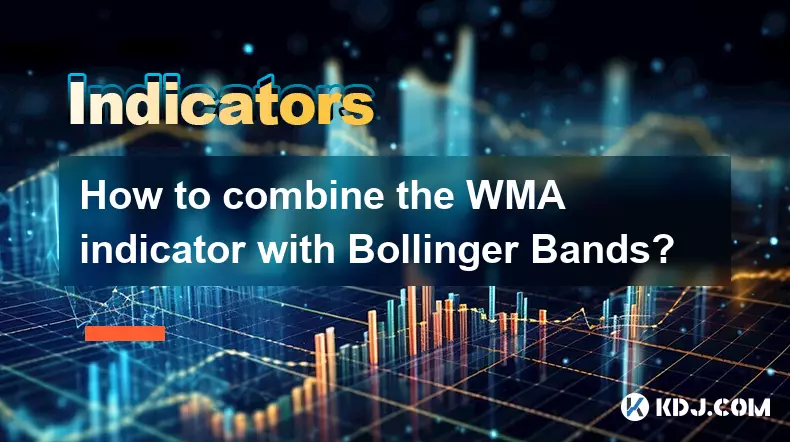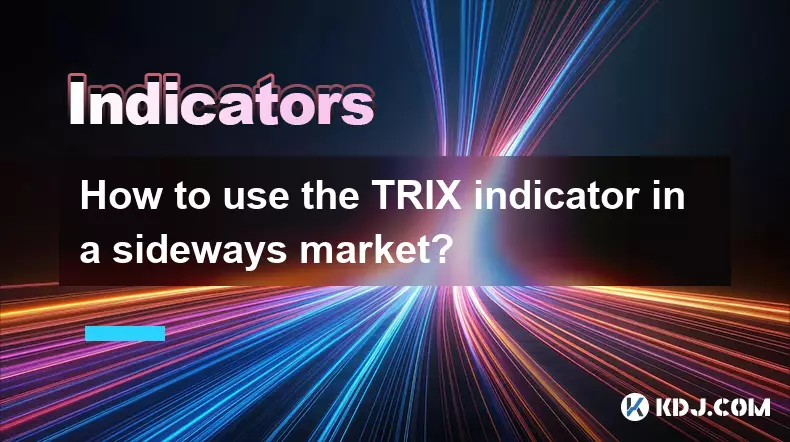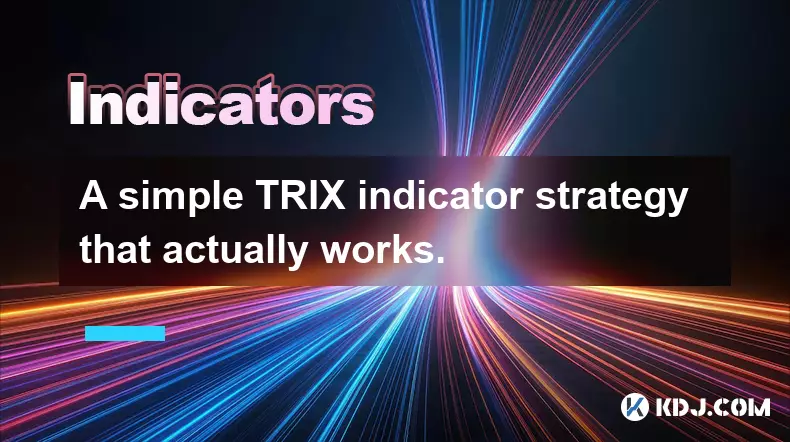-
 bitcoin
bitcoin $105968.894684 USD
4.17% -
 ethereum
ethereum $3639.320047 USD
7.62% -
 tether
tether $1.000339 USD
0.06% -
 xrp
xrp $2.407774 USD
5.96% -
 bnb
bnb $1011.704193 USD
2.28% -
 solana
solana $166.942754 USD
6.37% -
 usd-coin
usd-coin $1.000143 USD
0.03% -
 tron
tron $0.291515 USD
0.25% -
 dogecoin
dogecoin $0.181682 USD
4.06% -
 cardano
cardano $0.585450 USD
4.54% -
 hyperliquid
hyperliquid $42.099968 USD
5.20% -
 chainlink
chainlink $16.160745 USD
5.45% -
 zcash
zcash $645.269648 USD
12.96% -
 bitcoin-cash
bitcoin-cash $507.430338 USD
2.80% -
 stellar
stellar $0.290357 USD
3.69%
How to combine the WMA indicator with Bollinger Bands?
Combining WMA and Bollinger Bands enhances trading signals by aligning momentum, volatility, and trend direction for more accurate crypto entries and exits.
Nov 07, 2025 at 01:19 pm

Understanding the WMA and Bollinger Bands
1. The Weighted Moving Average (WMA) assigns greater importance to recent price data, making it more responsive to new information compared to simple moving averages. This sensitivity allows traders to detect shifts in momentum earlier, which is crucial in fast-moving crypto markets where volatility can trigger rapid price swings.
2. Bollinger Bands consist of a middle band (typically a Simple Moving Average) and two outer bands that represent standard deviations from the mean price. These bands expand and contract based on market volatility, providing visual cues about overbought or oversold conditions. When prices touch or breach the upper or lower bands, it often signals potential reversals or continuation patterns.
3. Combining WMA with Bollinger Bands creates a layered analytical approach. While Bollinger Bands highlight volatility and price extremes, the WMA adds directional context by emphasizing recent trends. This combination helps filter false breakouts and strengthens entry and exit decisions.
4. In cryptocurrency trading, where sentiment-driven spikes are common, this pairing offers a balanced view between momentum and volatility. Traders can use the WMA to confirm trend direction while relying on Bollinger Band boundaries to assess whether an asset is stretched beyond its normal range.
Enhancing Entry Signals with Confluence
1. A strong buy signal emerges when the price touches the lower Bollinger Band while the WMA shows a flattening or upward turn. This suggests that selling pressure may be exhausting and a reversal could be imminent, especially if supported by volume increases.
2. Conversely, a sell signal gains strength when price reaches the upper Bollinger Band and the WMA begins to curl downward. This alignment indicates weakening bullish momentum and a higher probability of correction.
3. Traders should wait for candlestick closure beyond the WMA line after a Bollinger Band touch to avoid premature entries. For instance, a bullish engulfing pattern closing above the WMA after testing the lower band adds confirmation.
4. In ranging markets, this setup excels by identifying bounce opportunities near band edges, using the WMA as dynamic support or resistance. This works particularly well in altcoins that exhibit cyclical behavior without clear directional trends.
Managing False Breakouts and Whipsaws
1. Cryptocurrency markets are prone to sudden pump-and-dump schemes that can cause prices to spike outside Bollinger Bands temporarily. Relying solely on band touches can lead to losses if not confirmed by momentum indicators like the WMA.
2. If the price breaks above the upper band but the WMA remains flat or declining, the breakout lacks momentum and is likely unsustainable. Similarly, a drop below the lower band without a steepening WMA decline may indicate a shakeout rather than a true downtrend.
3. Adjusting the WMA period can fine-tune responsiveness. Shorter WMAs (e.g., 7- or 10-period) react faster but increase noise; longer WMAs (e.g., 20-period) smooth out erratic moves but lag during sharp turns. Matching the WMA length to the Bollinger Band’s MA (often 20) ensures consistency.
4. Divergence between price action and WMA slope serves as an early warning. For example, if price makes a higher high at the upper band but the WMA forms a lower high, bearish divergence suggests weakening strength despite the apparent breakout.
Adapting to Different Timeframes
1. On shorter timeframes like 15-minute or 1-hour charts, the WMA-Bollinger combination helps capture intraday swings. Tighter band settings (e.g., 1.5 standard deviations) can improve relevance in choppy conditions common in low-cap tokens.
2. Daily charts benefit from standard Bollinger settings (20-period, 2 SD) paired with a 20-period WMA for swing trading. Signals here carry more weight due to reduced noise and alignment with broader market cycles.
3. During major news events or exchange listings, bands widen dramatically. The WMA acts as a stabilizing reference point—entries taken far from the WMA during such expansions require stricter risk controls.
4. Multi-timeframe analysis enhances reliability. A WMA-supported bounce off the lower band on the 4-hour chart gains credibility if the daily chart shows similar confluence, reducing impulsive decision-making.
Frequently Asked Questions
What is the optimal WMA period to pair with default Bollinger Bands? A 20-period WMA aligns well with the typical 20-period SMA used in Bollinger Bands. This symmetry ensures both indicators reflect the same baseline timeframe, improving signal coherence.
Can this strategy work in sideways crypto markets? Yes, especially when price oscillates within the bands. The WMA helps identify short-term direction within the range, allowing traders to fade extremes with defined risk near band edges.
How do volume patterns affect this setup? Rising volume during a band touch combined with a turning WMA increases signal validity. Low-volume breakouts beyond bands, even with WMA alignment, should be treated with skepticism.
Should stop-loss levels be placed beyond the Bollinger Bands? Placing stops just beyond the outer bands accounts for volatility spikes. For long positions, set stops slightly below the lower band; for shorts, place them above the upper band to avoid being stopped out by minor wicks.
Disclaimer:info@kdj.com
The information provided is not trading advice. kdj.com does not assume any responsibility for any investments made based on the information provided in this article. Cryptocurrencies are highly volatile and it is highly recommended that you invest with caution after thorough research!
If you believe that the content used on this website infringes your copyright, please contact us immediately (info@kdj.com) and we will delete it promptly.
- Altcoins, BlackRock, and a Bitcoin-Bullish Future: What's the Play?
- 2025-11-10 20:50:01
- Bitcoin Gains and Market Moves: What's Happening?
- 2025-11-10 20:35:01
- Pi Network, MNT, BlockDAG Presale: Decoding the Crypto Landscape
- 2025-11-10 21:25:01
- Bitcoin, Crypto Prices, and Dollar Strength: OG Wallets Stir the Pot
- 2025-11-10 21:10:02
- Pepeto Exchange Tackles the 'Tate Problem' and Sets the Stage for Crypto in 2026
- 2025-11-10 21:20:01
- Bitcoin ETF Outflows: Decoding the Weekly Trends and What They Mean
- 2025-11-10 21:20:01
Related knowledge

What's the best way to learn the TRIX indicator?
Nov 10,2025 at 12:39pm
Understanding the Basics of the TRIX Indicator1. The TRIX (Triple Exponential Average) indicator is a momentum oscillator designed to filter out short...

How do professional traders use the TRIX indicator?
Nov 06,2025 at 04:40pm
Understanding the TRIX Indicator in Crypto TradingThe TRIX (Triple Exponential Average) indicator is a momentum oscillator used by professional trader...

Can I use the TRIX indicator on my mobile trading app?
Nov 07,2025 at 07:40pm
The TRIX indicator, a momentum oscillator designed to filter out short-term fluctuations and highlight long-term trends, has become increasingly popul...

How to use the TRIX indicator in a sideways market?
Nov 10,2025 at 03:00pm
Bitcoin’s Role in Decentralized Finance Evolution1. Bitcoin remains the cornerstone of decentralized finance, serving as both a store of value and a b...

How to code a simple TRIX indicator script in Pine Script?
Nov 07,2025 at 06:20am
How to Code a Simple TRIX Indicator in Pine Script The TRIX (Triple Exponential Moving Average) indicator is widely used in cryptocurrency trading to ...

A simple TRIX indicator strategy that actually works.
Nov 08,2025 at 05:39pm
Understanding the TRIX Indicator in Crypto Trading1. The TRIX (Triple Exponential Average) indicator is a momentum oscillator designed to filter out s...

What's the best way to learn the TRIX indicator?
Nov 10,2025 at 12:39pm
Understanding the Basics of the TRIX Indicator1. The TRIX (Triple Exponential Average) indicator is a momentum oscillator designed to filter out short...

How do professional traders use the TRIX indicator?
Nov 06,2025 at 04:40pm
Understanding the TRIX Indicator in Crypto TradingThe TRIX (Triple Exponential Average) indicator is a momentum oscillator used by professional trader...

Can I use the TRIX indicator on my mobile trading app?
Nov 07,2025 at 07:40pm
The TRIX indicator, a momentum oscillator designed to filter out short-term fluctuations and highlight long-term trends, has become increasingly popul...

How to use the TRIX indicator in a sideways market?
Nov 10,2025 at 03:00pm
Bitcoin’s Role in Decentralized Finance Evolution1. Bitcoin remains the cornerstone of decentralized finance, serving as both a store of value and a b...

How to code a simple TRIX indicator script in Pine Script?
Nov 07,2025 at 06:20am
How to Code a Simple TRIX Indicator in Pine Script The TRIX (Triple Exponential Moving Average) indicator is widely used in cryptocurrency trading to ...

A simple TRIX indicator strategy that actually works.
Nov 08,2025 at 05:39pm
Understanding the TRIX Indicator in Crypto Trading1. The TRIX (Triple Exponential Average) indicator is a momentum oscillator designed to filter out s...
See all articles























![🔥 Long awaited! The ancestor of Pi coin is about to take off? PI friends, come in and take a look! [Daily Coin Selection | Bitcoin Trend | Money Making Opportunities] 🔥 Long awaited! The ancestor of Pi coin is about to take off? PI friends, come in and take a look! [Daily Coin Selection | Bitcoin Trend | Money Making Opportunities]](/uploads/2025/11/10/cryptocurrencies-news/videos/6911e42f9bad7_image_500_375.webp)


















































